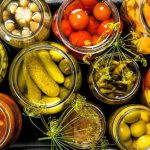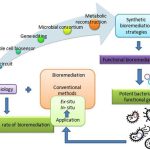Biogas is produced through the processing of various types of organic waste. It is a renewable and environmentally friendly fuel made from 100% local feedstocks that is suitable for a diversity of uses including road vehicle fuel and industrial uses. The circular-economy impact of biogas production is further enhanced by the organic nutrients recovered in the production process.
Biogas can be produced from a vast variety of raw materials (feedstocks). The biggest role in the biogas production process is played by microbes feeding on the biomass.
Digestion carried out by these microorganisms creates methane, which can be used as it is locally or upgraded to biogas equivalent to natural gas quality, enabling the transport of the biogas over longer distances. Material containing organic nutrients is also produced in the process, and this can be utilized for purposes such as agriculture.
Stages in biogas production
Biogas is produced using well-established technology in a process involving several stages:
- Biowaste is crushed into smaller pieces and slurrified to prepare it for the anaerobic digestion process. Slurrifying means adding liquid to the biowaste to make it easier to process.
- Microbes need warm conditions, so the biowaste is heated to around 37 °C.
- The actual biogas production takes place through anaerobic digestion in large tanks for about three weeks.
- In the final stage, the gas is purified (upgraded) by removing impurities and carbon dioxide.
After this, the biogas is ready for use by enterprises and consumers, for example in a liquefied form or following injection into the gas pipeline network.
Turning diverse range of materials into gas
Biogas production starts from the arrival of feedstocks at the biogas plant. A diverse range of solid as well as sludge-like feedstocks can be used.
Materials suitable for biogas production include:
- biodegradable waste from enterprises and industrial facilities, such as surplus lactose from the production of lactose-free dairy products
- spoiled food from shops
- biowaste generated by consumers
- sludge from wastewater treatment plants
- manure and field biomass from agriculture
The material is typically delivered to the biogas plant’s reception pit by lorry or waste management vehicle.
A delivery of solid matter such as biowaste will next undergo crushing to make its consistency as even as possible. At this point, water containing nutrients obtained from a further stage in the production process is also mixed with the feedstock to take the rate of solid matter down to only around one-tenth of the total volume.
This is also when any unwanted non-biodegradable waste, such as packaging plastic of out-of-date food waste from shops, is separated from the mixture. This waste is taken to a waste treatment facility where it is used to generate heat and electricity. Biomass that has passed through slurrification is combined with biomass delivered in the form of slurry to the biogas plant and pumped into the pre-digester tank where enzymes secreted by bacteria break down the biomass into an even finer consistency.
Next, the biomass is sanitized before entering the actual biogas reactor (digester). In sanitization, any harmful bacteria found in the material are eliminated by heating the mixture to above 70 °C for one hour. Once sanitized, the mass is pumped into the main reactor where biogas production takes place. Sanitization makes it possible to use the fertilizer product in agriculture.
Biomass is turned into gas by microbes
In the biogas reactor, microbial action begins and the biomass enters a gradual process of fermentation.
In practice this means that microbes feed on the organic matter, such as proteins, carbohydrates and lipids, and their digestion turns these into methane and carbon dioxide.
Most of the organic matter is broken down into biogas – a mixture of methane and carbon dioxide – in approximately three weeks. The biogas is collected in a spherical gas holder from the top of the biogas reactors.
Digestate utilized as fertilizers or gardening soil
The residual solids and liquids created in biogas production are referred to as digestate. This digestate goes into a post-digester reactor and from there further into storage tanks. Digestates are well suited for uses such as fertilization of fields.
Digestates can also be centrifuged to separate the solid and liquid parts.
Solid digestates have uses such as fertilizers in agriculture or in landscaping and can also be turned into gardening soil through a process of maturation involving composting.
Digestates are centrifuged to yield enough process water for the slurrification of biowaste at the beginning of the process. This helps reduce the use of clean water. The centrifuged liquid is rich in nutrients, particularly nitrogen, that can be separated further using methods such as stripping technology and used as fertilizers or nutrient sources in industrial processes.
Clean biogas helps move towards low-carbon society
Gas would already be ready for several uses straight from the biogas plant gas holder. However, before being injected into the gas pipeline network or used to fuel vehicles, it will still undergo purification.
In this upgrading process, gas is filtered and flown into columns where it is scrubbed by cascading water at a very specific pressure and temperature. Water efficiently absorbs carbon dioxide and sulfur compounds contained by the gas.
Biogas can also be purified using other methods, such as passing it through activated carbon filters to remove impurities.
The final upgraded biogas injected into the gas network is at least 95% and usually around 98% methane. Upgraded biogas still contains a couple of per cent of carbon dioxide as its further separation from methane is not cost-effective let alone sensible as regards the usability of the gas. Biogas is dried carefully before injection into the gas network to prevent condensation in winter subzero conditions.
The biogas produced can be used for purposes such as fuelling municipal waste management vehicles, urban buses or private cars. At the same time, gas serves as evidence of those practical actions that are taking us towards the low-carbon society of the future.


